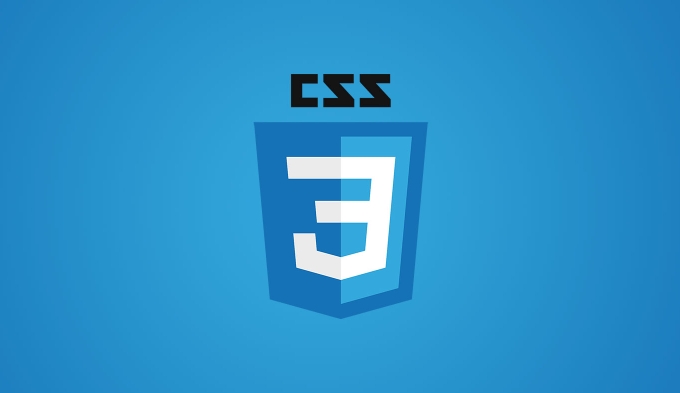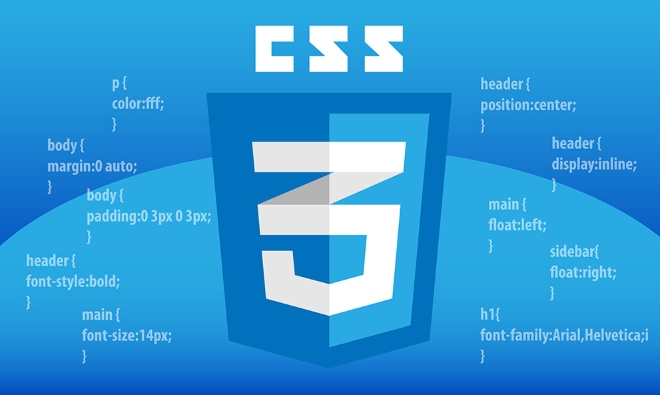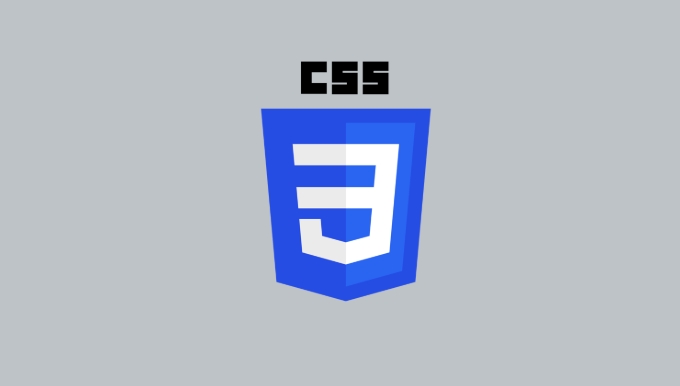The core of responsive images is to adapt the picture to the screen and maintain proportion. 1. Set width: 100% and height: auto to achieve basic adaptation; 2. Use the <picture> tag to load pictures with different resolutions with srcset and media attributes; 3. Control the filling method through object-fit, such as cover cropping, contain white space, and fill stretching. These methods ensure that the image display is appropriate and performance is optimized under different devices.

The image is displayed properly on different devices, which is an important part of the web experience. The core of using CSS to implement responsive pictures is to allow the pictures to automatically adapt to the screen size while keeping the proportions not stretched or compressed.

Image width adaptive
The easiest way is to set width: 100% for the image so that the image will scale as the width of the container changes. With height: auto , the original aspect ratio can be maintained and the deformation can be prevented.

img {
width: 100%;
height: auto;
}After doing this, the image will automatically adjust the size, whether in the mobile phone or desktop browser, just fill the container without overflowing. This is the basic operation of responsive images and is suitable for almost all image display scenarios.
Load different pictures for different resolutions
Sometimes you may not want to use the same image to display the same on all devices. For example, the mobile phone does not need a large, high-definition image, otherwise it will be slow to load and waste traffic.

You can use the HTML <picture> tag to match srcset and media attributes to load appropriate pictures according to different screen widths:
<picture> <source srcset="small.jpg" media="(max-width: 600px)"> <source srcset="medium.jpg" media="(max-width: 900px)"> <img src="/static/imghw/default1.png" data-src="large.jpg" class="lazy" alt="example picture"> </picture>
The above code means:
- If the screen width is less than or equal to 600px, load small.jpg
- If it is between 601 and 900px, use medium.jpg
- If it exceeds 900px, use large.jpg
This method is suitable for websites with high performance requirements, such as e-commerce, blogs, etc.
Control the adaptation method of image objects
Sometimes, images are not displayed separately, but are used as a background or part of a fill element in an area. At this time, object-fit can be used to control how the image adapts to the container.
Commonly used values are:
-
object-fit: cover: maintain proportional cropping and cover the entire container, suitable for avatars, card covers, etc. -
object-fit: contain: display the image in full, may leave white space -
object-fit: fill: forcefully fills the container, may deform
For example, if you make a fixed-size picture card, you can write it like this if you want each picture to be filled but not deformed:
.card img {
width: 100%;
height: 200px;
object-fit: cover;
}In this way, the effect can be displayed uniformly regardless of whether the image itself is horizontal or vertical.
Basically these common methods. Implementing responsive pictures is not complicated, but you should pay attention to several key points: maintaining the proportion, selecting the image source reasonably, and adjusting the display method according to the purpose. If these details are done, the webpage will look more professional.
The above is the detailed content of Implementing responsive images with CSS. For more information, please follow other related articles on the PHP Chinese website!

Hot AI Tools

Undress AI Tool
Undress images for free

Undresser.AI Undress
AI-powered app for creating realistic nude photos

AI Clothes Remover
Online AI tool for removing clothes from photos.

Clothoff.io
AI clothes remover

Video Face Swap
Swap faces in any video effortlessly with our completely free AI face swap tool!

Hot Article

Hot Tools

Notepad++7.3.1
Easy-to-use and free code editor

SublimeText3 Chinese version
Chinese version, very easy to use

Zend Studio 13.0.1
Powerful PHP integrated development environment

Dreamweaver CS6
Visual web development tools

SublimeText3 Mac version
God-level code editing software (SublimeText3)

Hot Topics
 What is 'render-blocking CSS'?
Jun 24, 2025 am 12:42 AM
What is 'render-blocking CSS'?
Jun 24, 2025 am 12:42 AM
CSS blocks page rendering because browsers view inline and external CSS as key resources by default, especially with imported stylesheets, header large amounts of inline CSS, and unoptimized media query styles. 1. Extract critical CSS and embed it into HTML; 2. Delay loading non-critical CSS through JavaScript; 3. Use media attributes to optimize loading such as print styles; 4. Compress and merge CSS to reduce requests. It is recommended to use tools to extract key CSS, combine rel="preload" asynchronous loading, and use media delayed loading reasonably to avoid excessive splitting and complex script control.
 External vs. Internal CSS: What's the Best Approach?
Jun 20, 2025 am 12:45 AM
External vs. Internal CSS: What's the Best Approach?
Jun 20, 2025 am 12:45 AM
ThebestapproachforCSSdependsontheproject'sspecificneeds.Forlargerprojects,externalCSSisbetterduetomaintainabilityandreusability;forsmallerprojectsorsingle-pageapplications,internalCSSmightbemoresuitable.It'scrucialtobalanceprojectsize,performanceneed
 Does my CSS must be on lower case?
Jun 19, 2025 am 12:29 AM
Does my CSS must be on lower case?
Jun 19, 2025 am 12:29 AM
No,CSSdoesnothavetobeinlowercase.However,usinglowercaseisrecommendedfor:1)Consistencyandreadability,2)Avoidingerrorsinrelatedtechnologies,3)Potentialperformancebenefits,and4)Improvedcollaborationwithinteams.
 CSS Case Sensitivity: Understanding What Matters
Jun 20, 2025 am 12:09 AM
CSS Case Sensitivity: Understanding What Matters
Jun 20, 2025 am 12:09 AM
CSSismostlycase-insensitive,butURLsandfontfamilynamesarecase-sensitive.1)Propertiesandvalueslikecolor:red;arenotcase-sensitive.2)URLsmustmatchtheserver'scase,e.g.,/images/Logo.png.3)Fontfamilynameslike'OpenSans'mustbeexact.
 What is Autoprefixer and how does it work?
Jul 02, 2025 am 01:15 AM
What is Autoprefixer and how does it work?
Jul 02, 2025 am 01:15 AM
Autoprefixer is a tool that automatically adds vendor prefixes to CSS attributes based on the target browser scope. 1. It solves the problem of manually maintaining prefixes with errors; 2. Work through the PostCSS plug-in form, parse CSS, analyze attributes that need to be prefixed, and generate code according to configuration; 3. The usage steps include installing plug-ins, setting browserslist, and enabling them in the build process; 4. Notes include not manually adding prefixes, keeping configuration updates, prefixes not all attributes, and it is recommended to use them with the preprocessor.
 What are CSS counters?
Jun 19, 2025 am 12:34 AM
What are CSS counters?
Jun 19, 2025 am 12:34 AM
CSScounterscanautomaticallynumbersectionsandlists.1)Usecounter-resettoinitialize,counter-incrementtoincrease,andcounter()orcounters()todisplayvalues.2)CombinewithJavaScriptfordynamiccontenttoensureaccurateupdates.
 CSS: When Does Case Matter (and When Doesn't)?
Jun 19, 2025 am 12:27 AM
CSS: When Does Case Matter (and When Doesn't)?
Jun 19, 2025 am 12:27 AM
In CSS, selector and attribute names are case-sensitive, while values, named colors, URLs, and custom attributes are case-sensitive. 1. The selector and attribute names are case-insensitive, such as background-color and background-Color are the same. 2. The hexadecimal color in the value is case-sensitive, but the named color is case-sensitive, such as red and Red is invalid. 3. URLs are case sensitive and may cause file loading problems. 4. Custom properties (variables) are case sensitive, and you need to pay attention to the consistency of case when using them.
 What is the conic-gradient() function?
Jul 01, 2025 am 01:16 AM
What is the conic-gradient() function?
Jul 01, 2025 am 01:16 AM
Theconic-gradient()functioninCSScreatescirculargradientsthatrotatecolorstopsaroundacentralpoint.1.Itisidealforpiecharts,progressindicators,colorwheels,anddecorativebackgrounds.2.Itworksbydefiningcolorstopsatspecificangles,optionallystartingfromadefin






